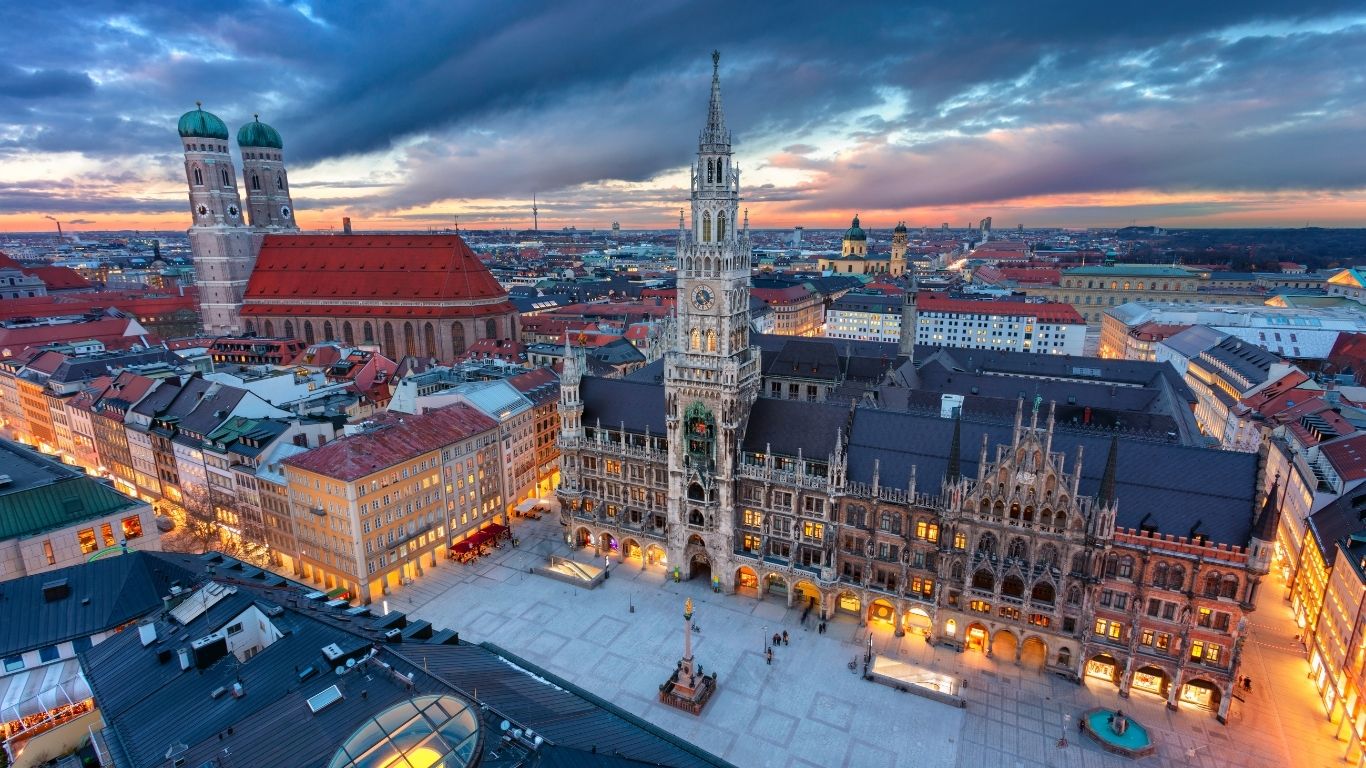
Where to Take the Best Photos in Munich? Our 10 Must-See Spots
Our 10 Must-See Spots for Picture-Perfect Memories
The capital and largest city of Bavaria, Germany, is Munich, which has stunning historical sites in addition to its modern amenities. First of all, the idea that Marienplatz is one of Germany's most beautiful squares is supported by the square's distinctive clock tower, Gothic-style Old Town Hall, and various classical architecture. It has a ton of beautiful locations! Although it is difficult to pick just ten, we have compiled a list of our top ten locations for stunning photos while you're there.
We're sharing our top picks for breathtaking photo spots in Munich in this guide. In order to avoid crowds and capture the ideal light, we also advise you on the best time and method to visit each location.
Let's take a tour of the city's most picturesque locations, ideal for making memories along the way.
1. Marienplatz & New Town Hall (Neues Rathaus)
The city government, comprising the city council, mayors' offices, and a minor amount of the administration, is housed in Munich's New Town Hall, which occupies the northern portion of Marienplatz. The municipality moved to a new location in 1874, leaving the Old Town Hall. The structure has 400 rooms and 9,159 square meters of space. The main facade, which is 100 meters long and faces the Marienplatz, is lavishly ornamented. The greatest princely cycle in a German town hall, it depicts the Guelph Duke Henry the Lion and nearly the whole Bavarian Wittelsbach dynastic line.
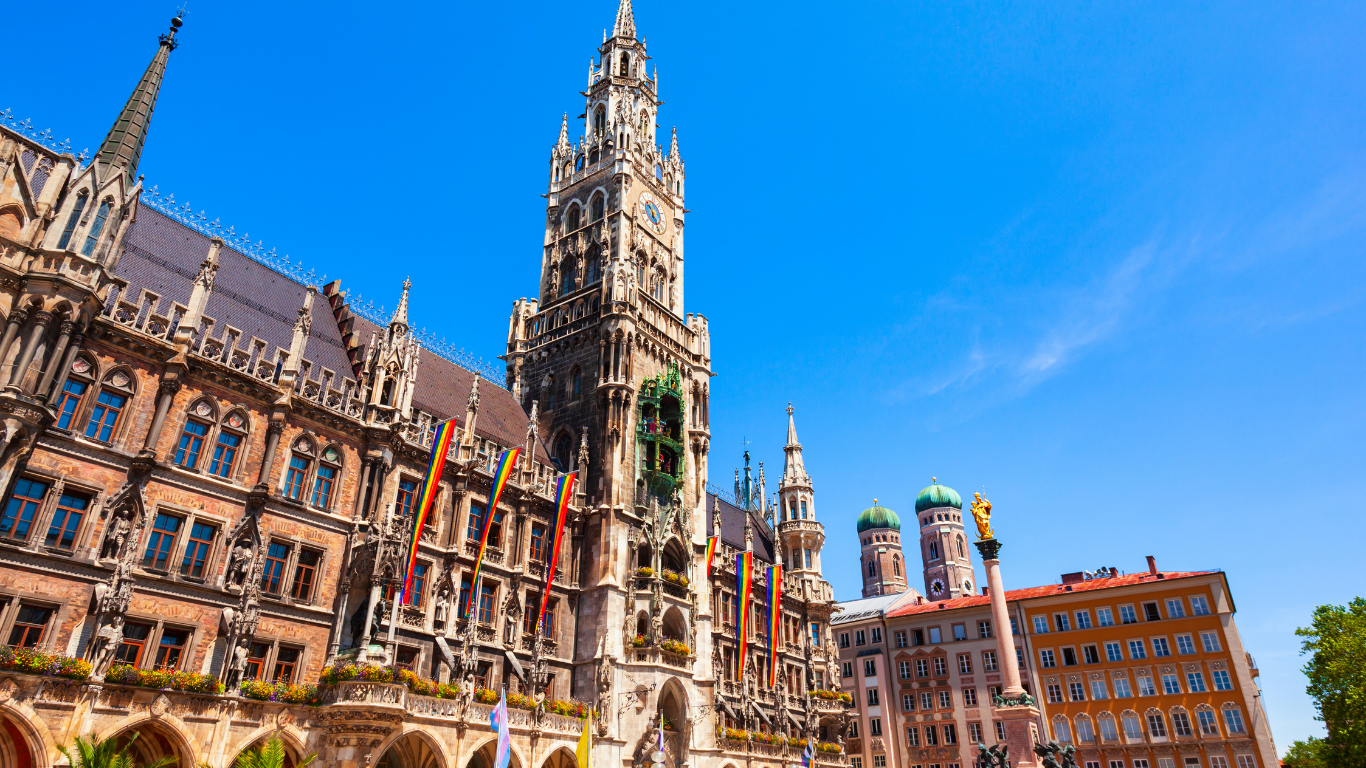
- Why is it exotic? 🤔
It’s the center of Munich with stunning buildings, historic charm, and the famous Glockenspiel. - Best time to visit 📅
Mid-morning for good light and lively crowds. - Photography tip 📷
Stand back to capture the whole square and the New Town Hall.
2. Nymphenburg Palace
The Nymphenburg Palace and its park are now among Munich's most well-known landmarks. The Nymphenburg Palace is a Baroque palace located in the Neuhausen-Nymphenburg neighborhood of Munich. It was the primary summer seat of the House of Wittelsbach, the former Bavarian monarchs. When paired with the nearby Nymphenburg Palace Park, it is among Europe's most prestigious royal palaces. It even exceeds Versailles in frontal breadth, measuring 632 meters on the north-south axis.
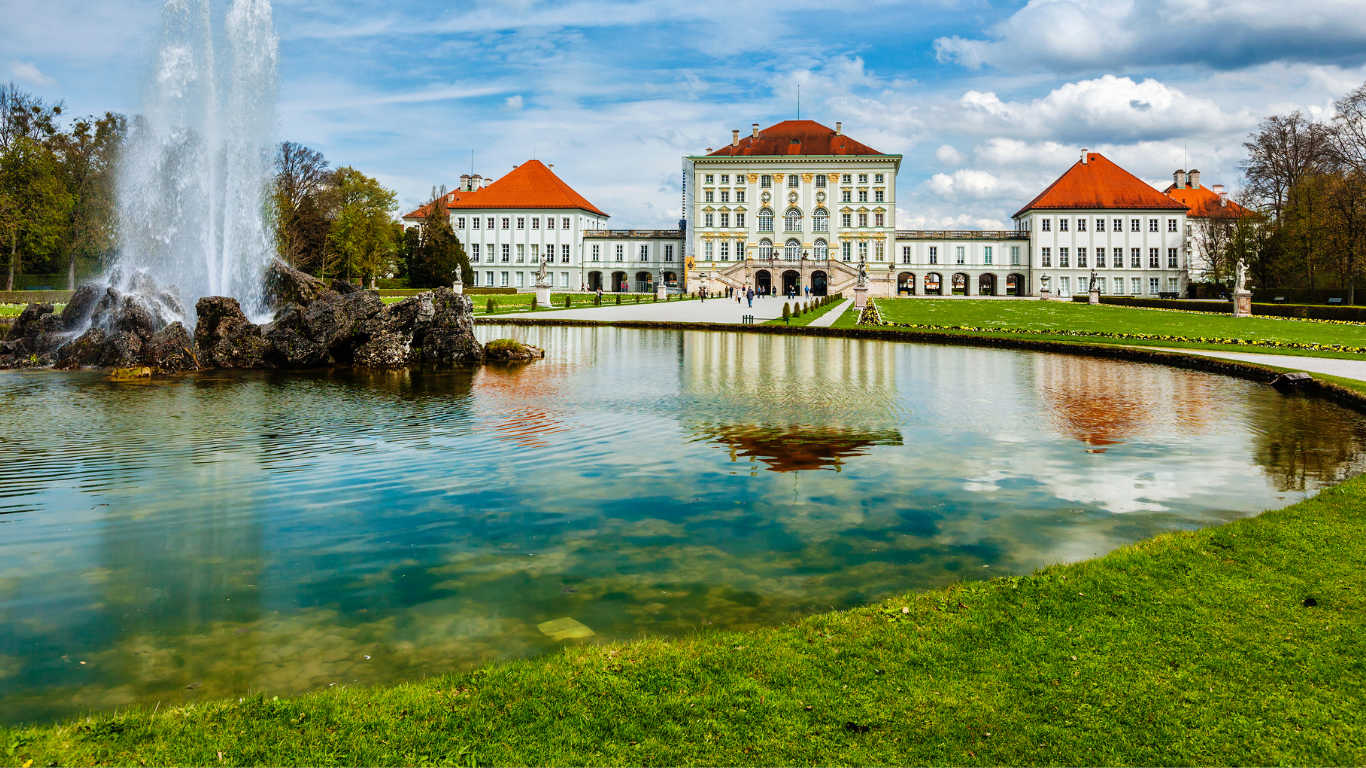
- Why is it exotic? 🤔
This royal palace has beautiful gardens, fountains, and Baroque architecture. - Best time to visit 📅
Late spring or early autumn for colors and soft light. - Photography tip 📷
Shoot reflections in the canals or wide shots of the garden paths.
3. English Garden (Englischer Garten)
The Englischer Garten is a sizable public park that stretches from the center of Munich to the city's northeastern boundaries. It was made for Prince Charles Theodore, Elector of Bavaria, in 1789 by Sir Benjamin Thompson (1753–1814), who would go on to become Count Rumford. The Englischer Garten is one of the biggest urban public parks in the world, spanning 910 acres. The name alludes to its casual environment in the English garden style, which was popular in England from the middle of the 18th century to the beginning of the 19th century and is especially linked to Capability Brown.
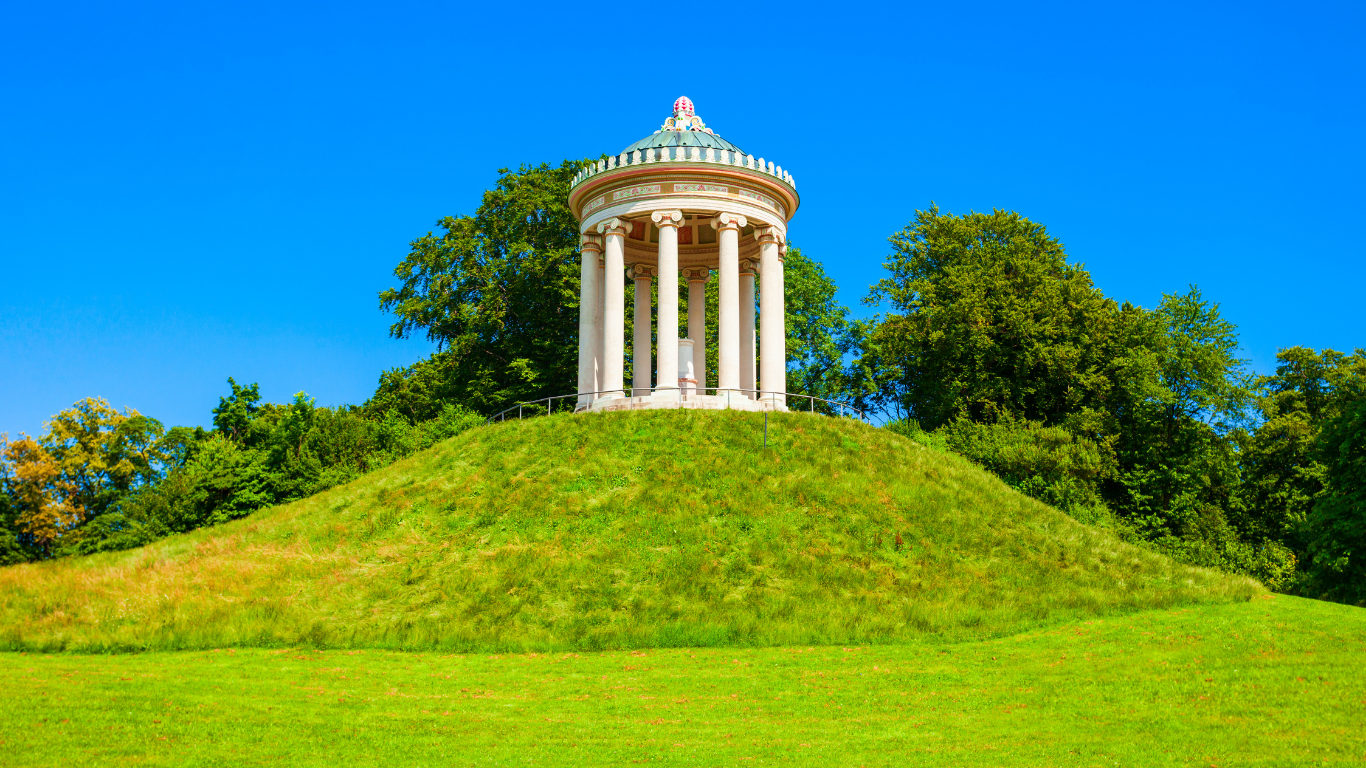
- Why is it exotic? 🤔
One of the largest urban parks in Europe, with open fields, rivers, and peaceful trails. - Best time to visit 📅
Afternoon for warm sunlight and active park scenes. - Photography tip 📷
Capture surfers on the Eisbach River or the view from Monopteros.
4. Olympiapark
Built for the Summer Olympics in 1972, Olympiapark is an Olympic park, which is situated in Munich's Oberwiesenfeld area, and is still used as a location for religious, social, and cultural events, including worship services. A modern carillon is part of it. Olympiapark München GmbH, a holding company wholly owned by Munich, the state capital, is in charge of managing the Park. During the 1972 Olympics in Munich, Germany, the Olympic Park was regarded as an architectural wonder as well.
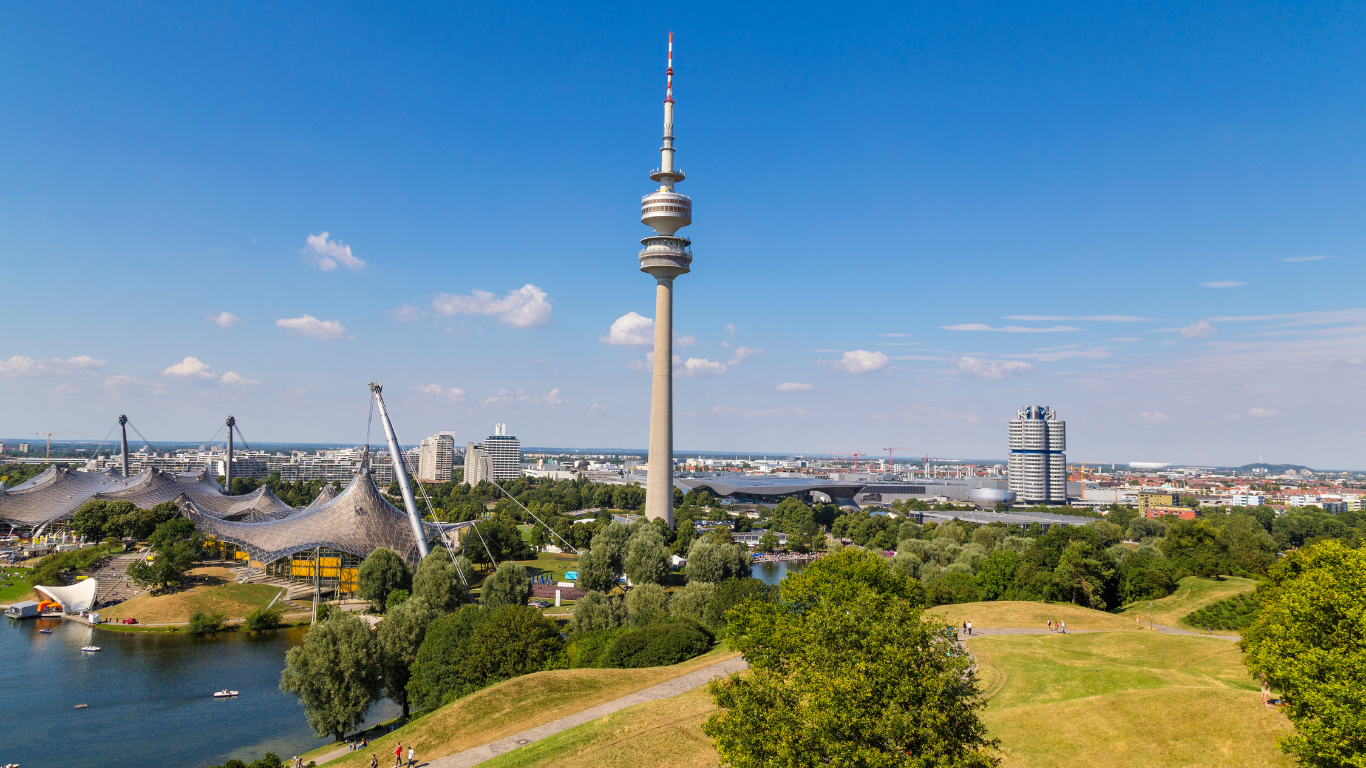
- Why is it exotic? 🤔
Built for the 1972 Olympics, it has futuristic architecture and wide green spaces. - Best time to visit 📅
Sunset for city views from the Olympic Tower. - Photography tip 📷
Capture reflections in the lake or the unique roof design.
5. BMW Welt & Museum
The BMW Museum was founded in 1973, just after the opening of the 1972 Summer Olympics, and serves as the corporate museum of BMW history. It underwent renovations from 2004 to 2008 as part of the building of the BMW Welt, which is right across the street. June 21, 2008, was the museum's reopening date. Approximately 120 items can currently be shown in the 5,000 square meter exhibition hall. Located in Munich's Am Riesenfeld neighborhood, close to the Olympic Park, and close to the BMW headquarters and factory, the BMW Welt is a multipurpose exhibition, delivery, adventure museum, and event space.
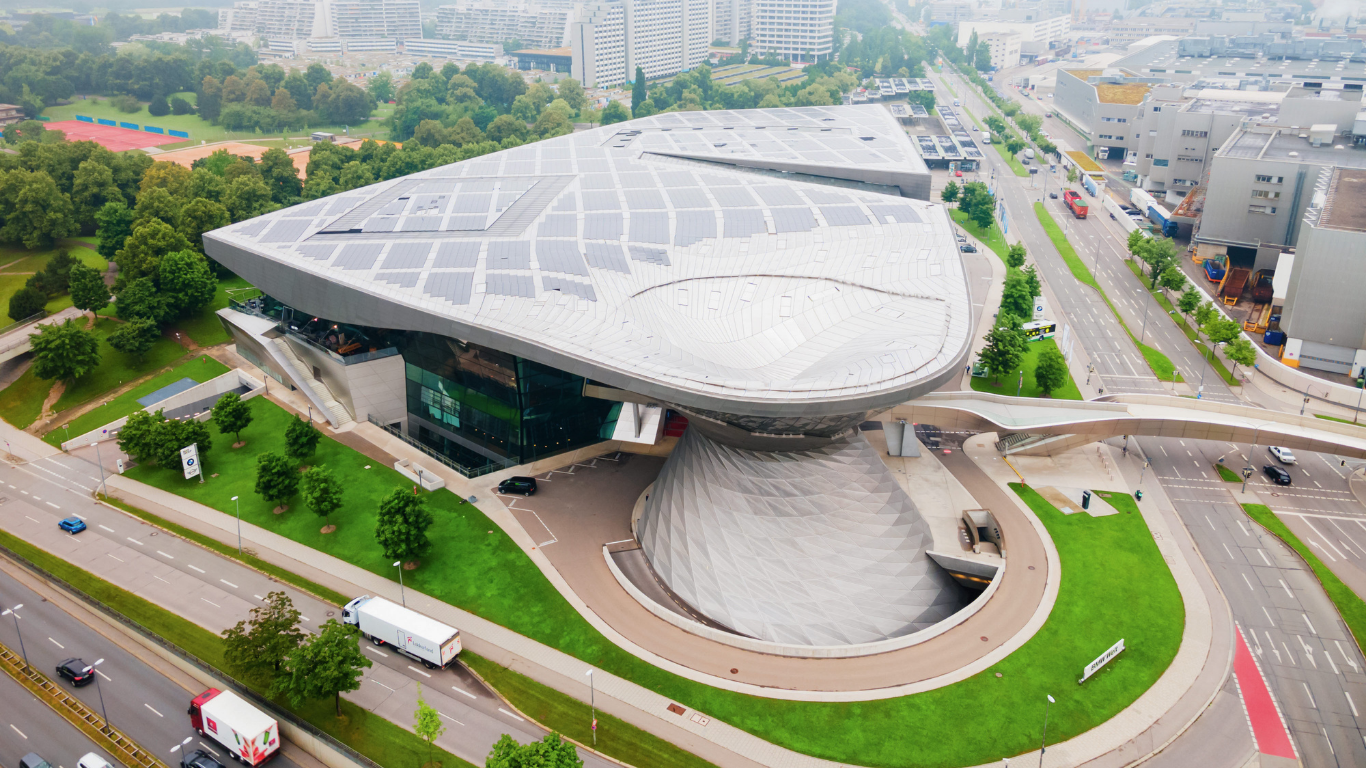
- Why is it exotic? 🤔
Sleek, modern curves and cool lighting make this a futuristic photo spot. - Best time to visit 📅
Afternoon, when the glass reflects the light just right. - Photography tip 📷
Shoot wide to capture the entire modern structure or focus on reflections.
6. Residenz München
The Wittelsbach rulers of Bavaria once occupied the Residenz, a royal palace located in the center of Munich. The largest city palace in Germany, the Residenz, welcomes tourists now to admire its architecture, interior design, and exhibits of the old royal collections. The building complex showcases 130 rooms and has ten courtyards. The Königsbau, the Alte Residenz, and the Festsaalbau are the three principal sections.
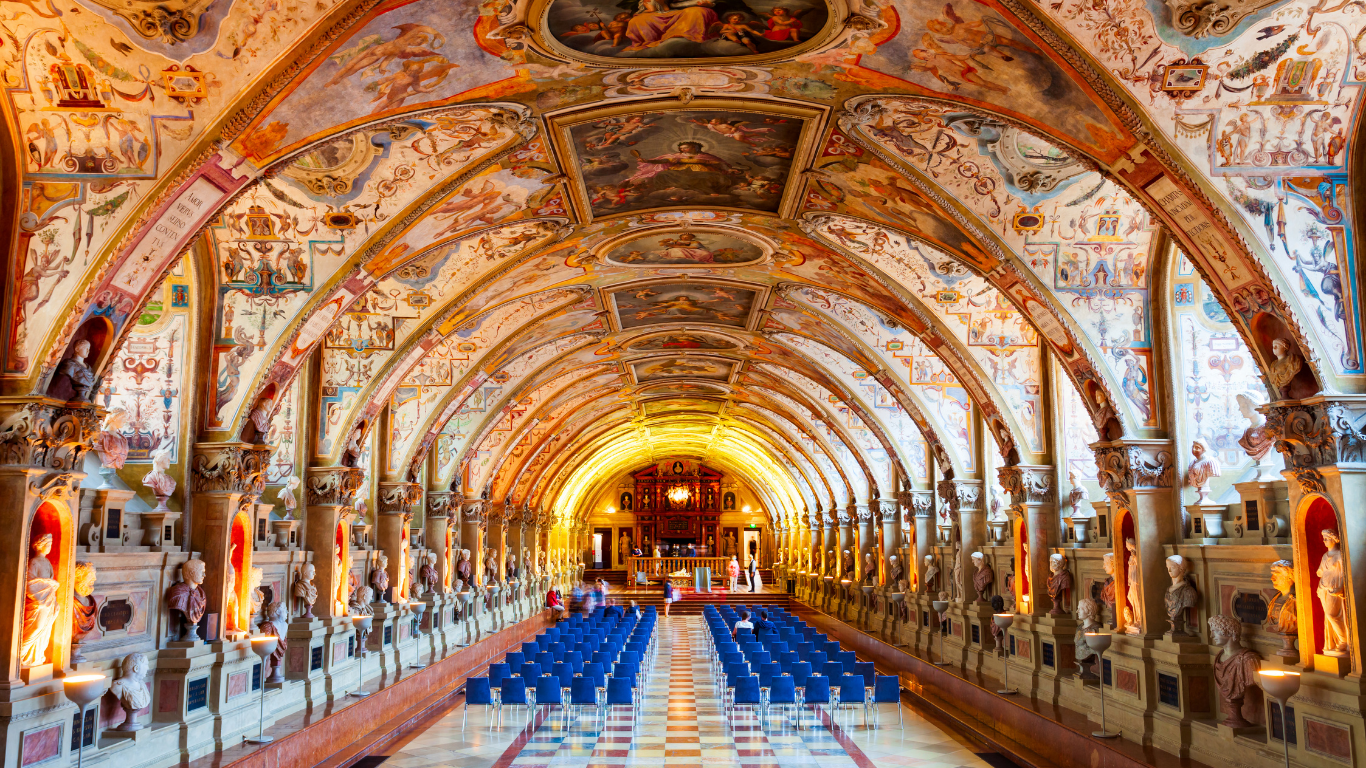
- Why is it exotic? 🤔
An elegant palace with ornate halls, courtyards, and a rich history. - Best time to visit 📅
Earlier in the day, to beat the tour groups. - Photography tip 📷
Look for symmetry and gold detailing inside the rooms.
7. Viktualienmarkt
Munich's old center is home to the Viktualienmarkt, a permanent food market. Except for Sundays and other holidays, it has been held every day since 1807. Permanently erected stalls, some with big exhibits, define the aspect of the more than two-hectare complex. A variety of seasonal stalls are also present. The market stalls are set up around a beer garden in multiple parts. Munich's central maypole and a number of fountains are further features that define the location. Furthermore, since 1907, the Munich neighborhood of Pasing has hosted the tiny Pasinger Viktualienmarkt, which occupies 400 m² of sales space.
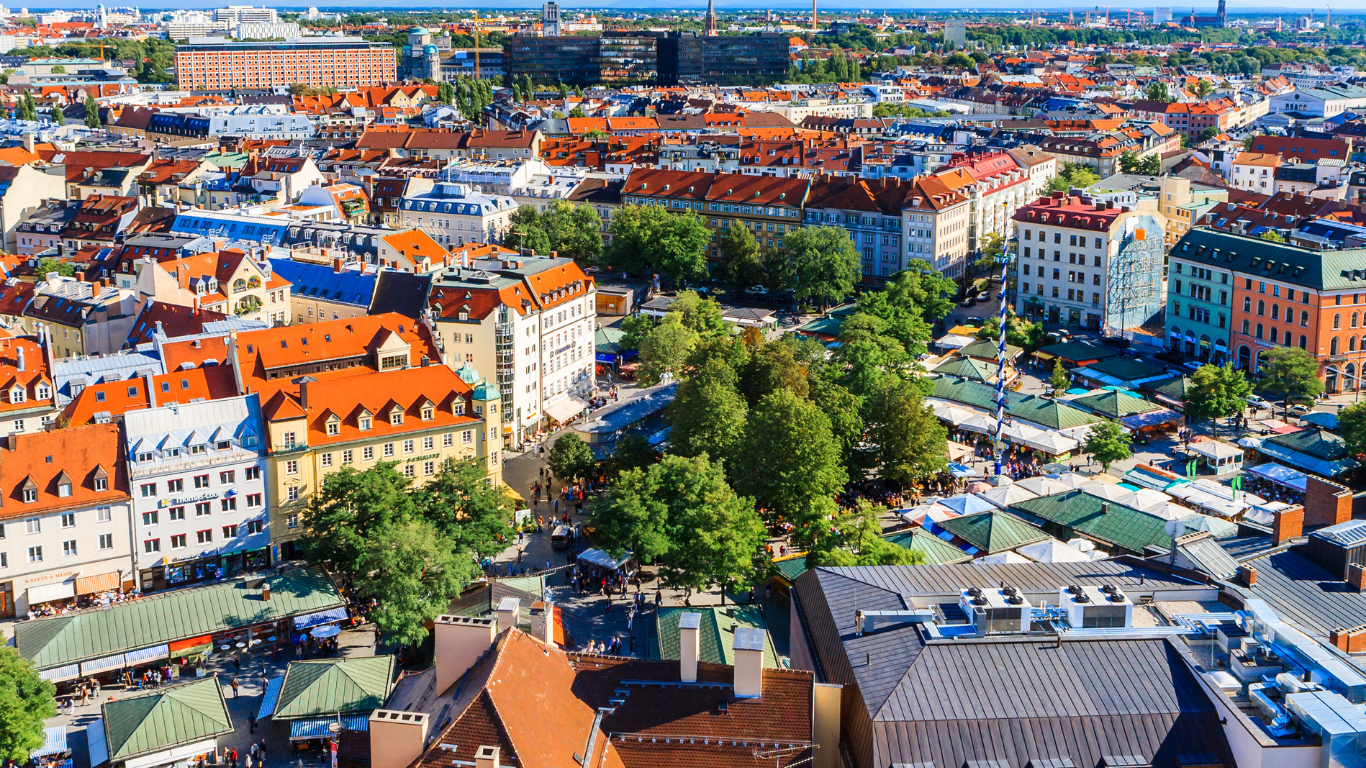
- Why is it exotic? 🤔
A vibrant market with fresh produce, flowers, and local food. - Best time to visit 📅
Late morning, when the stalls are full and colorful. - Photography tip 📷
Focus on details—baskets of fruit, flower stands, or friendly vendors.
8. Asam Church (Asamkirche)
Egid Quirin Asam, a sculptor, and Cosmas Damian Asam, a painter, constructed the Asam Church, a Baroque church in Munich, as their private church between 1733 and 1746. It is regarded as one of the most significant Late Baroque structures in southern Germany. Three vertically separated portions make up the interior, which gets brighter from bottom to top. For churchgoers, the bottommost part of the benches is kept comparatively dark; its design represents the world's suffering. The second part, which stands above, is designated for the emperor and is blue and white in color. God and eternity are honored in the uppermost section of the indirect and concealed illuminated ceiling painting.
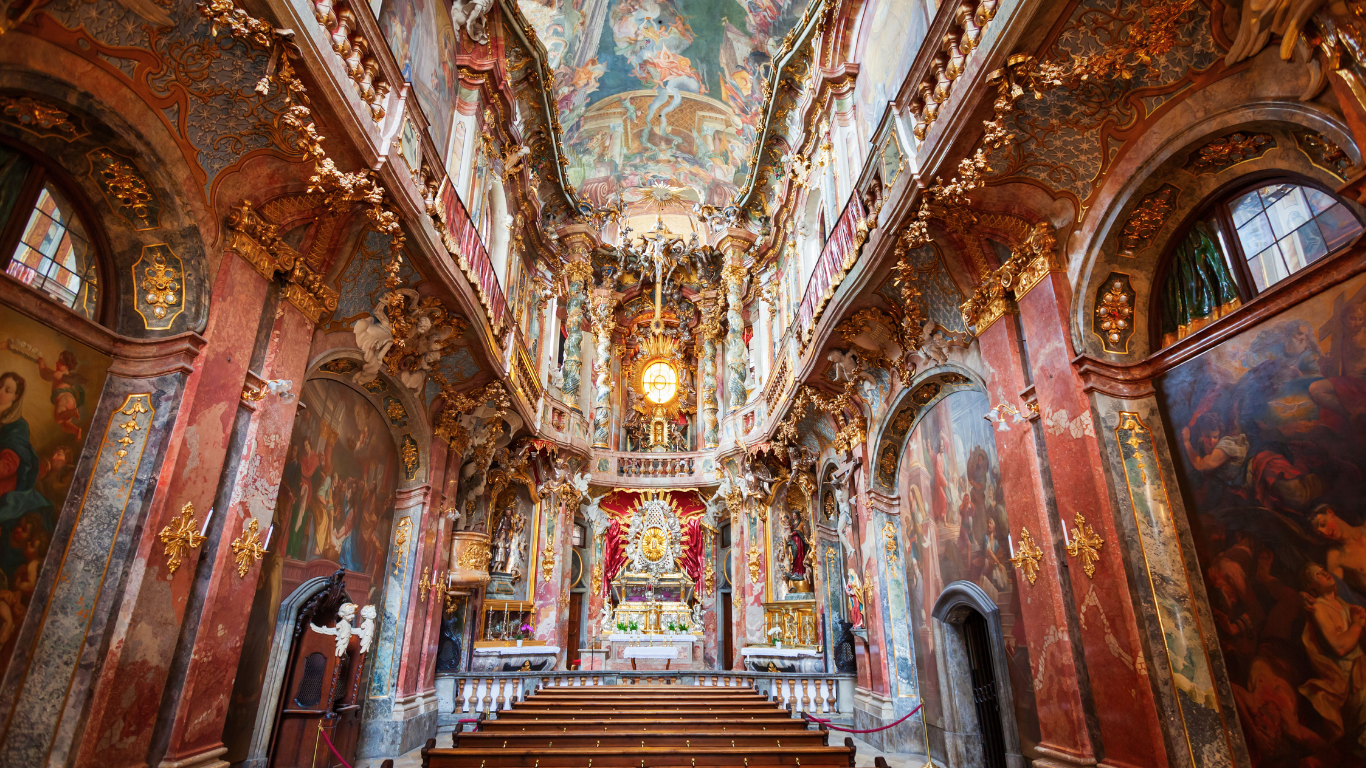
- Why is it exotic? 🤔
A tiny, richly decorated Baroque church full of detail and drama. - Best time to visit 📅
Midday, when the light inside is at its best. - Photography tip 📷
Zoom in on golden carvings or shoot the ceiling’s dramatic art.
9. Allianz Arena
Situated at Franz-Beckenbauer-Platz 5 on the northern edge of Munich's Schwabing-Freimann borough on the Fröttmaning Heath, the Allianz Arena is the second-largest stadium in Germany after the Westfalenstadion in Dortmund. It is well-known for its exterior of inflated ETFE plastic panels, making it the first stadium in the world with a fully color-changing exterior. The stadium can accommodate 70,000 spectators for international matches and 75,000 for domestic games.
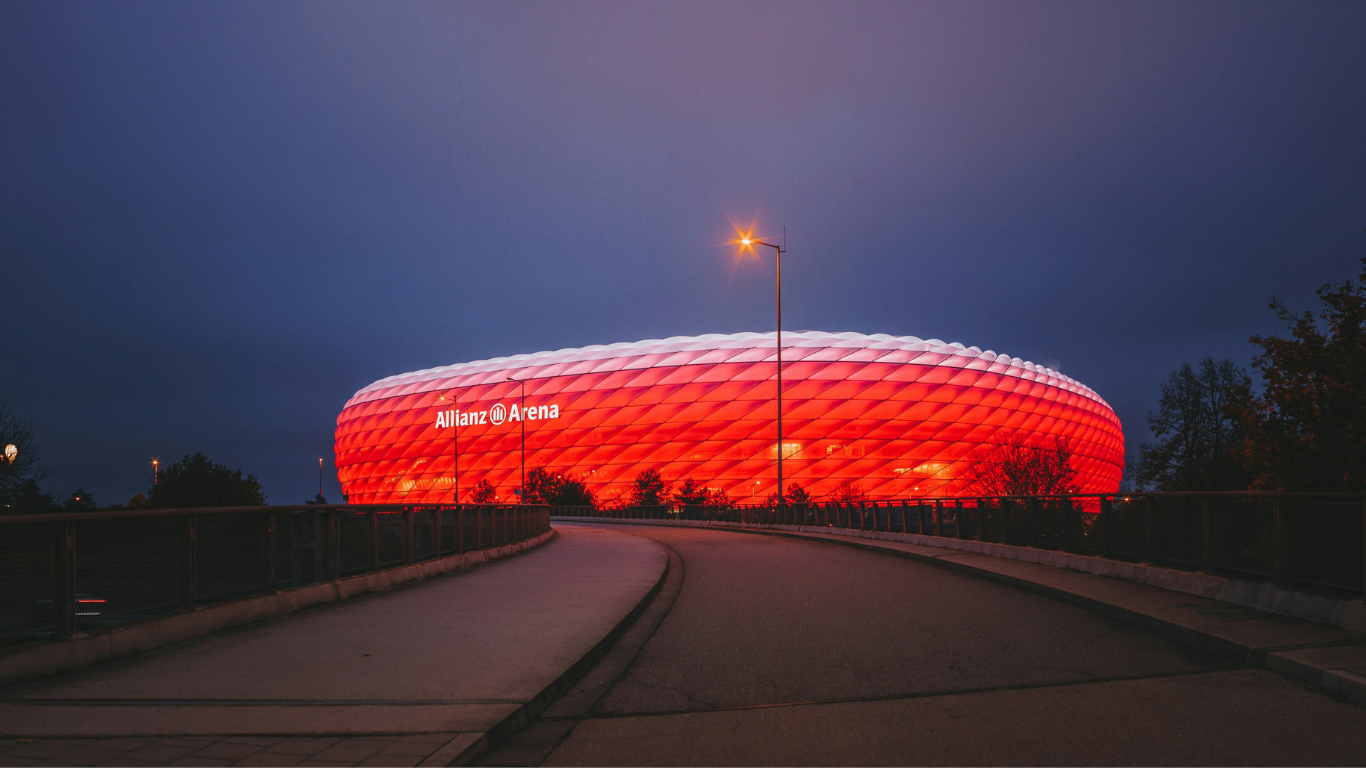
- Why is it exotic? 🤔
This modern football stadium glows with LED lights and has a unique bubble-like design. - Best time to visit 📅
Evening, especially when the stadium lights up in different colors. - Photography tip 📷
Shoot wide from across the street to capture the full shape and glow.
10. Theatine Church & Odeonsplatz
Elector Ferdinand Maria and his wife, Henriette Adelaide of Savoy, founded the Theatine Church of St. Cajetan and Adelaide, a Roman Catholic church in Munich, Southern Germany, between 1663 and 1690 as a token of gratitude for the birth of Prince Max Emanuel, the long-awaited heir to the Bavarian crown, in 1662. Today run by the Dominican Order, the church is also known as the Dominican Priory of St. Cajetan. It's 72 meters long and 15.5 meters wide, with two towers that were not originally part of the plans.
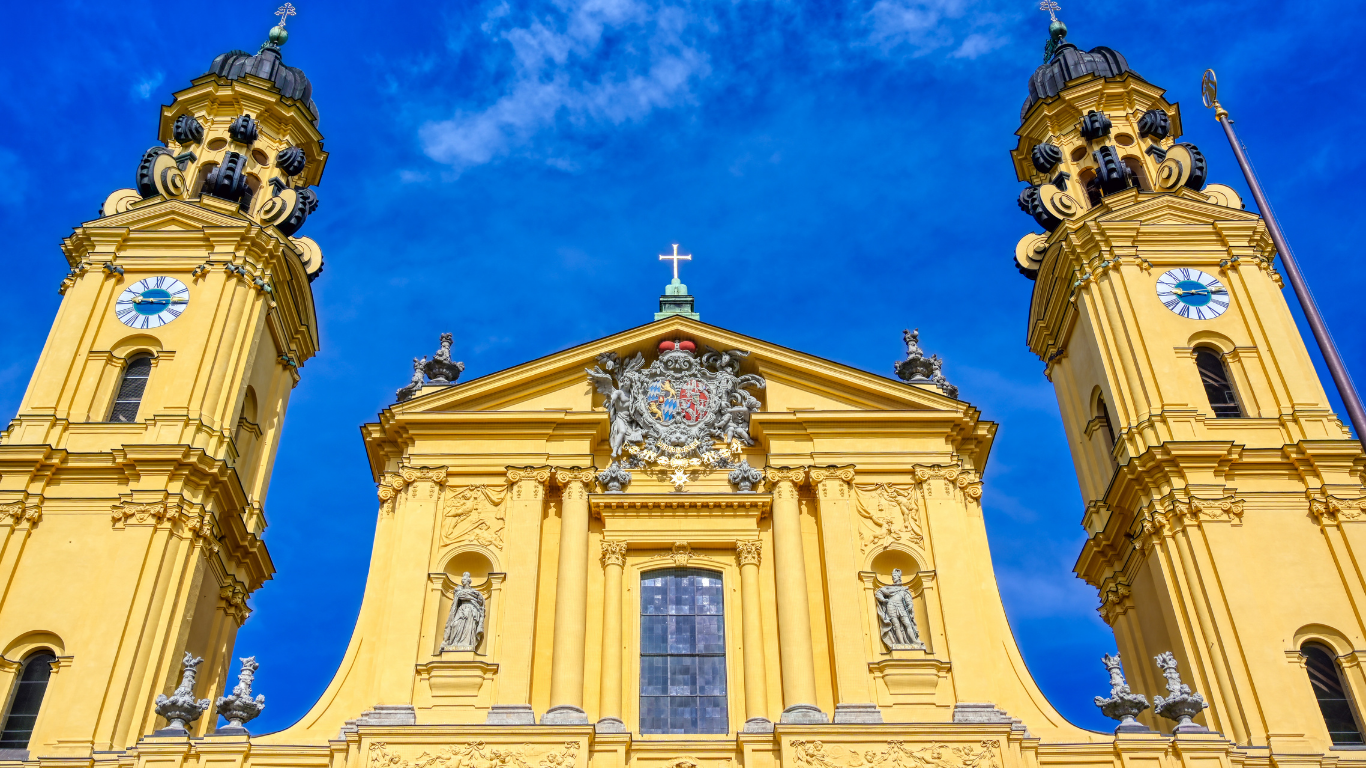
- Why is it exotic? 🤔
A beautiful yellow church with Italian-style Baroque design, right next to a grand public square. - Best time to visit 📅
Late afternoon for golden light on the yellow facade. - Photography tip 📷
Frame the church through the arches of Feldherrnhalle or capture street life in the square.
Final Thoughts
These are the top photography spots you won't want to miss in Munich. However, there is much more to see and enjoy, as the city offers endless photo opportunities. Take a walk and explore more, and make both your day and your photos amazing. Hopefully, this guide will help you capture your best moments in Munich.
Ready to explore?
Don’t forget to bring extra storage, as you’ll be taking a lot of photos.
Check Out Our Blog

Best Travel Apps 2025 | Smarter Trips Made Simple


The Ultimate Guide to Eco Friendly Event Planning with Digital Tools


Airbum vs. Google Photos: Best Picture Sharing Apps







